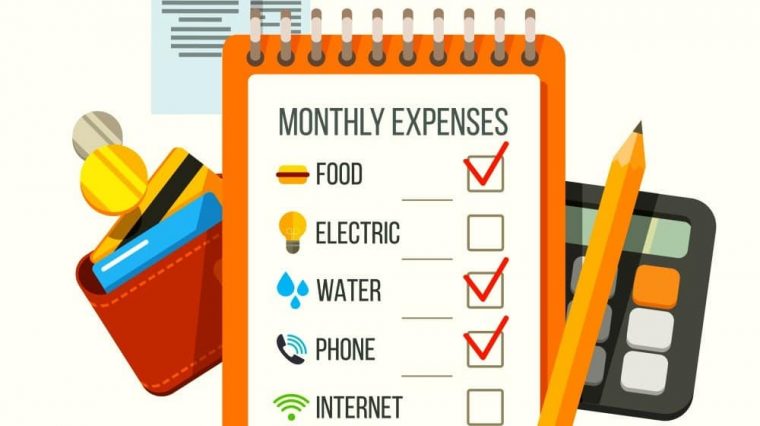
I both anticipate and dread the end of the month. On one hand, I get paid. On the other, I have to think about the bills I have to pay and it adds a little bit more stress to my already anxiety-filled life.
Not only do I have to think about whether I can afford to splurge a little on Shopee this month, but I also have to bear in mind the money plans for the future. Which, in all honesty, sucks because how am I supposed to do that when I can barely get past this month?
The Future of Financial Freedom
The end goal here is for us to achieve financial freedom so that we don’t have any money worries when we’re old and grey.
Achieving financial freedom itself takes a lot of time, effort and planning. You have to pay off all your loans and debts, invest in something that works long term, already have money prepared for your emergency fund (yes, you have to have an emergency fund), and if you have kids, you have to make sure they’re all set until college, along with all your other future plans before you’re actually considered financially free.
That’s a lot.
Worry not though, Malaysia itself ranks 22nd in terms of financial freedom. That’s not that bad considering that a Malaysian’s average salary is RM2,900. For a person with that amount, achieving financial freedom would be fine, with great practice and responsibility, as well as smart planning, of course.
To help with that, I have come up with a (hopefully) full-proof way that will get you to die-die save up for a better future.
1. Old Style Piggy Banking

Yes, you read that correctly. It might seem a little childish or dumb to you but it works. I’ve had a piggy bank for the past 5 years and I have no idea how much is in there. All I know is that it’s super heavy.
At the end of every month, when I’ve received my salary and paid off what I need to, I’ll deposit a certain amount of money and use half of it for what I wanted (as a means to ‘treat’ myself). The remainder of the cash I have, I will simply put in the piggy bank. It doesn’t matter how much it is because every penny counts.
If you’ve ever watched Disney’s Princess and The Frog, you’ll know exactly what I’m talking about.
At the end of the year, you can put everything in your savings account. Or once the piggy bank is filled to the brim, you can haul it over to the bank to deposit it. And most importantly, do not touch it, unless absolutely necessary.
2. Savings Account x2

Speaking of savings accounts, do you guys have more than one of those? One for bills and spending and another for just your savings? I was not informed that this was a thing until a year ago.
My parents kept asking me if I had a savings account and I just thought it was the one where I opened to receive my paycheck. But apparently, they meant a literal savings account. For example, an account with ASB or Tabung Haji.
Having an ASB account provides an avenue for people to save and invest in a relatively low-risk and long-term investment instrument. When you put money in your ASB account, at the end of each year, you get a consistent and competitive return of dividend. The dividend of ASB, while distributed on a yearly basis, is computed monthly based on the minimum amount of the month.
To know more about the workings of ASB, click here.
If you’re a non-bumi who’s also interested in putting money in a separate account, you can check out ASW. It works similarly to ASB.
If you don’t trust yourself withholding money in a piggy bank, a savings account is another sure alternative that you can use to keep your money safe (from yourself). We’ve covered this in our article, 7 Tips For Saving Money While Living in Lockdown, but since it’s important, it needs to be repeated.
3. Retirement Scheme

If you work for a company, then you might be familiar with EPF. Usually, the company would ask you to make a 9-11% contribution of your salary to the EPF and your employer will in turn contribute 12-13%.
An EPF account is for when you retire. If you choose to not work anymore, you’ll have some money to fund yourself and your lifestyle. EPF uses the shares of the contributions from when you were working along with your former employers’ contributions, plus the yearly dividends. The more percent you choose to contribute, the more you get in return.
If you work independently, there is still a way for you to have a retirement scheme for yourself. You must first already have an EPF account of your own though, and if you do, you can start your self contribution journey. To ensure that you make the contributions you need each month, you can link your EPF to your bank account. You may access these funds when you reach retirement or at the tender age of 60 and above.
4. Set Short Term Goals (Including Smart Investments)

Short-term goals are easier to track and manage. Sometimes, it’s difficult to imagine what the future holds for you. So, to make things easier, you could set goals that are a little bit easier to reach.
For example, maybe you could work on paying off your PTPTN loans first. Since it’s every month and frequent, it’s easier to manage. Or if you signed up for a pay later scheme, you can focus on paying that off first before moving on to other attachments.
One thing to keep in mind though is to be smart in your investments. That is not to say, don’t invest but more towards choosing wisely. Investments are undetermined — the business you put your money into might go well one day and fail the next, so you have to always be on your toes and make sure you have extra money on hand. If you are unsure if you can afford that (especially if it’s monthly), it’s better to leave it be and wait until you’re more financially stable.
5. Track Your Spending

Tracking how much you spend, to me, is mandatory simply so that you know what you need to pay for and what amount you can save and/or spend for the month. You can spoil yourself a bit, of course, you’ve worked hard! You deserve to be spoiled! But also remember: be smart about it.
I’m not talking about spoiling yourself by buying a car or overspending on a shopping trip. That does more harm than good, trust me. I mean like, have a staycation at a hotel somewhere for the weekend or book a spa day. Having time off once in a while would be good for hard-working people like you. Before that, make sure to write it off in a little notebook how much you plan on spending.
First, write down the amount you have on you when you first get your salary, followed by how much it takes to pay all the bills you have. After all that is done, ration some money based on how you want to spend it. For example, money for groceries, for school, for transportation, for spending, etc. At the end of the list, how much money you have left is put into your savings account.
Keep At It

Maintaining a “minimalist” lifestyle when it comes to money is surely something that needs practice. It would come easier to you when it becomes habitual. If you fail at saving up once or twice, that doesn’t mean you should give up and just continue living paycheque to paycheque. Think about your future.
It won’t be easy but if I, a recovering shopaholic with a previous RM50 to her name can do it, so can you.
If you struggle with saving money and impulse buying, check out:
How Do I Stop Myself From Impulse Buying?









